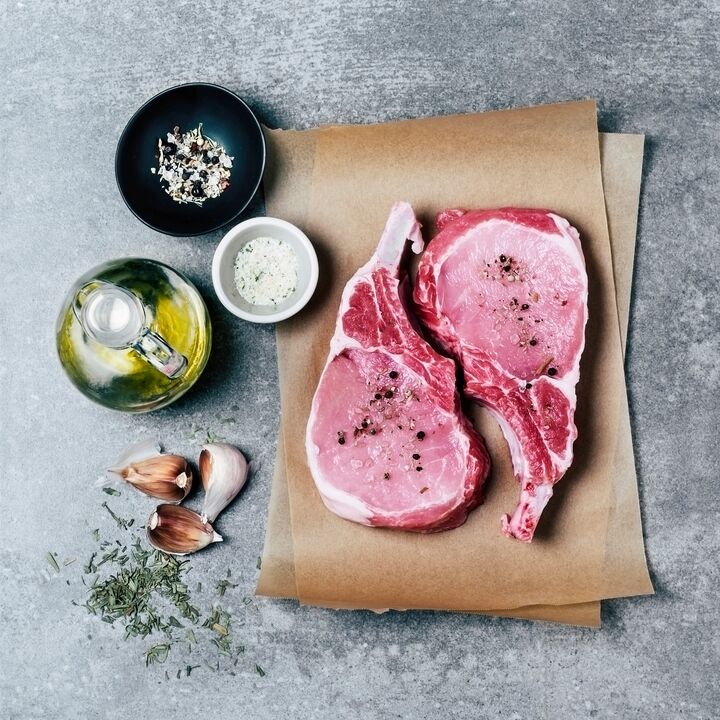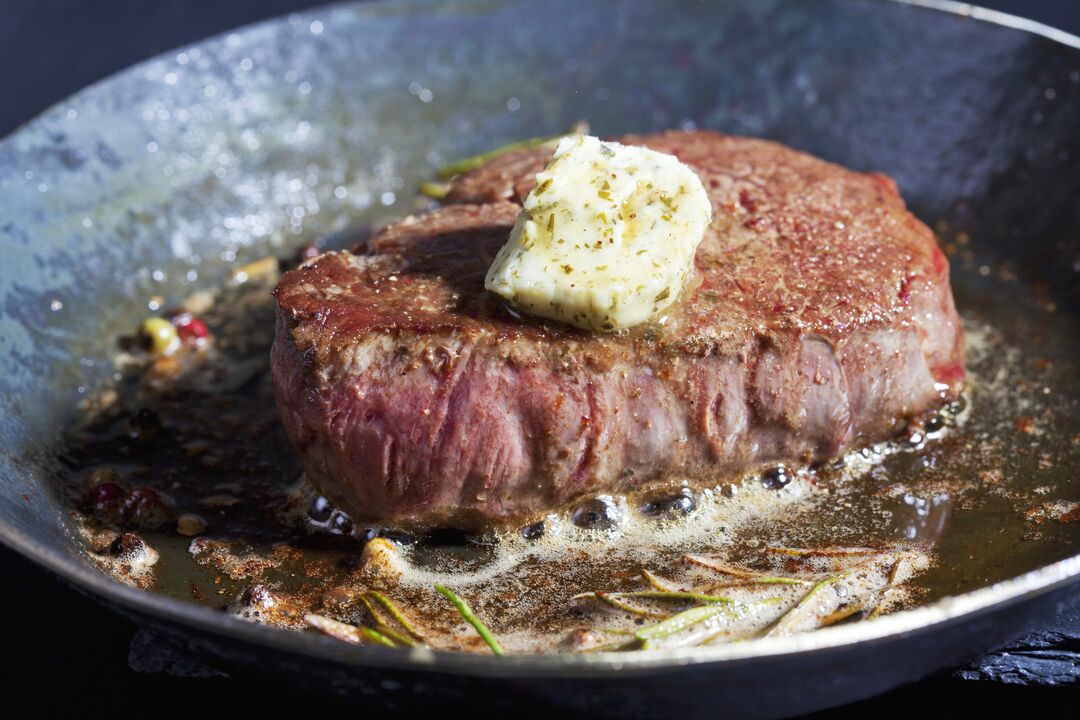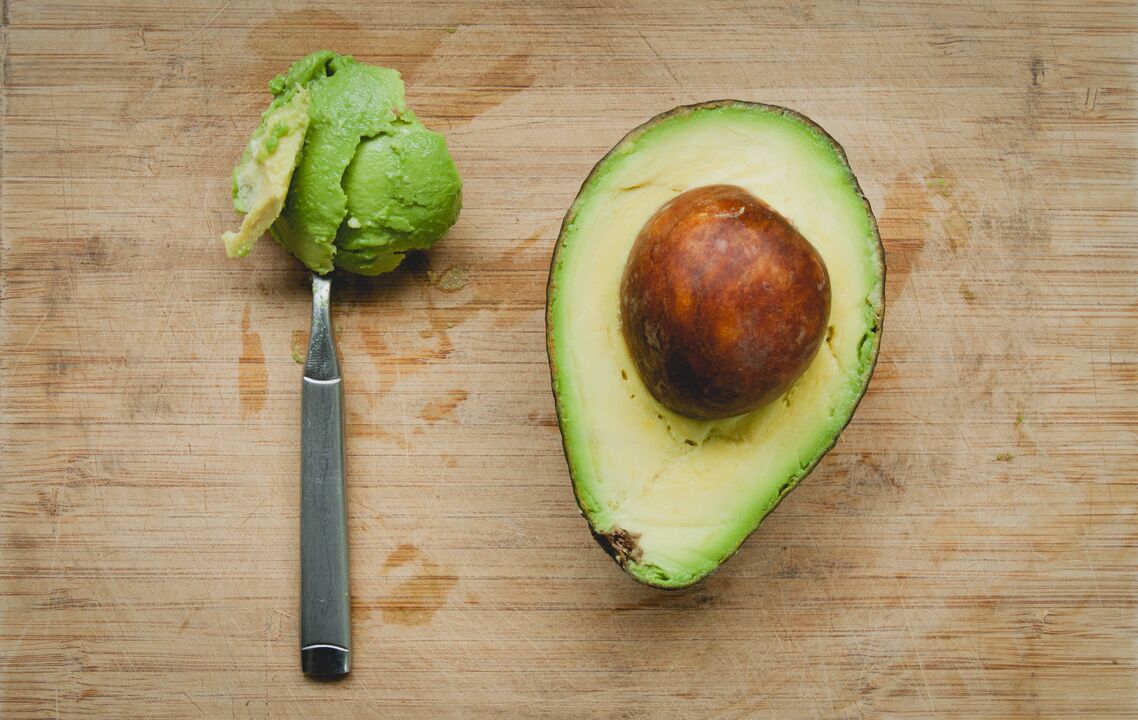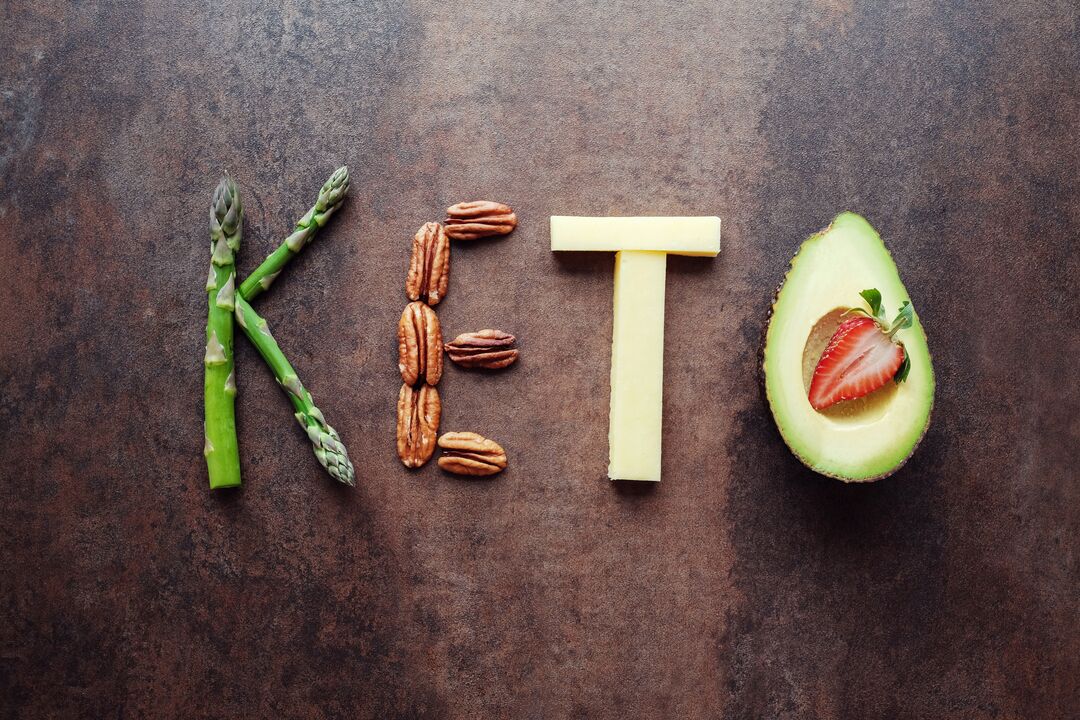The ketogenic diet (also known as the keto diet or simply the keto diet) is the most popular, debated and mysterious weight loss diet today. The progressive public is actively losing weight by eating homemade mayonnaise, and in the capital's catering establishments you can even order a "sample" of the keto diet - a burger, a cutlet flowing with juice, free from buns and other excesses. Foreign scientists are publishing more and more new studies proving the benefits of an unusual menu, causing a process that forces the body to get energy from fat, not carbohydrates, but domestic weight loss experts are in no hurry to trust the fad. The truth, as usual, is out there somewhere.

Schnitzel diet is in fashion
A can of coconut oil, three dozen eggs, a dozen steaks, seven hundred grams of fresh lard, a bottle of olive oil, a kilo of tofu, some radishes and a bag of fresh herbs. This is what the result of a keto diet devotee's visit to the supermarket looks like. It's time to think in horror: "First he will die of indigestion, and then of cholesterol blockage in the blood vessels! ""And demonstrate your apparent ignorance of diet trends.
On a high-fat ketone diet, you don't get fat and you don't get sick — you lose weight and get healthier! At least that's what many keto bloggers and their followers, who call themselves ketoists, are firmly convinced of. They glamorize life-giving ketosis as a new ideal nutritional philosophy that aims to elevate the genetic code of a 21st-century individual, spoiled by the dominance of carbohydrate foods, into the best shape while rehabilitating fats betrayed by all sinswill.
The keto diet (also known as the keto diet) alters our body's enzyme and hormone machinery in a way that reduces production of the hormone insulin, which regulates blood sugar levels and, as a result, feelings of hunger and satiety.

"Instead" of insulin and in response to an increase in fat and protein against the background of a sharp reduction in carbohydrates in the diet, during a ketone diet the liver begins to produce ketone bodies, a special form of acetone. These chemical compounds are produced in a wayabsorbed into the body in a closed-loop system, move from organ to organ with the bloodstream and influence the process of fatty acid oxidation.
As a result, the body enters ketosis, that is, it learns to get the power for existence not from the usual available carbohydrate chains, but from already accumulated deposits of adipose tissue and fats from food, thereby avoiding the depletion of protein reserves. The result is unprecedented weight loss, muscle gain, defeat of hunger pangs, and new life.
Of course, in case your metabolism can handle the ketone diet: This nutritional plan (although like any other) is not universal. For some, even short-cutting carbs turns into weakness, a sharp shift in well-being, and other signs that ketosis doesn't appear to be on the way.

The Keto Diet: A Story of Oblivion and Rebirth
The keto diet is just pretending to be a trendy novelty. The first low-carbohydrate (carbo) and low-fat eating plan was clinically tested in the 1920s. Physicians working at the time with patients suffering from diseases of the nervous system often prescribed courses of therapeutic fasting, which severely and significantly reduced the production of insulin and other hormones that affect the functioning of the central nervous system and brain. This yielded excellent results, but they couldn't be enjoyed for long for one obvious reason: a human won't last long alone on the water, and when it comes to a child, things take an even more serious turn.
It was then that the prototype of the menu that we know today as the ketogenic diet was developed. Diet, which remodels metabolism so that carbohydrates are no longer the primary source of energy, has been thought to be chemically similar to refusal to eat. Particularly outstanding results of a low-carbohydrate and high-fat diet were shown using the example of epilepsy: the number of tormenting seizures in patients decreased.
The technique is simple, original and does not require significant material costs. It was used safely and widely, but, unfortunately, not for long: the pharmacological industry proved the effectiveness of a new type of drugs - anticonvulsants, and doctors of the new generation preferred to prescribe their patients pills instead of lard. The oblivion of the antiepileptic ketone diet has also been fueled by the growing diet trend of blaming fats for all problems.
There was a resurgence of interest in the ketogenic diet in the late 1990s when director Jim Abrahams (best known for thrash comedy masterpieces like The Naked Gun and Scary Movie 4) directed the unexpectedly penetrating and candid melodrama Not Harmbased on my own experiences.

Abrahams' son Charlie suffered from a severe form of epilepsy from birth and reacted extremely badly to medication of all kinds with side effects. The toddler's parents desperately sought help before discovering information about the ketone diet. With their help, they managed to bring the disease under non-drug control. Jim Abrahams was so steeped in the power of the keto diet that he organized a fund to help epileptic children and their families, assisted by Meryl Streep, who played the role of the mother of a young patient in the film Do No Harm.
Incidentally, that's why the keto diet is often referred to as the "Meryl Streep diet" — and by no means because the world-class star has really given up carbohydrates in favor of fats.
The Ketogenic Diet: From Epilepsy Drugs to a Weight Loss Arsenal
Related to the ketogenic diet, one of the most popular weight loss diets of the late 20th century - the Atkins diet - is the most effective and dangerous. American cardiologist Robert Atkins popularized a proven method of effective weight loss, adapting the achievements of scientists and doctors made during the period of therapeutic use of the keto diet. He created his own concept of a four-phase diet that heralded a true era of carbohydrate-restricting eating plans.
As planned by Atkins, it is necessary to find the exact ratio of carbohydrate food to protein and fat in which you can first lose weight to the desired weight and then maintain it relatively comfortably. Therefore, he suggests initially reducing the consumption of carbohydrates to 20 grams per day for two weeks, and then gradually increasing their number in search of an individual ratio.

The Hollywood elite are obsessed with Atkins; As a result of this popularity, low-carb diets literally sat on the throne as the most effective. The main trend was the reduction of carbohydrates and fats in favor of protein foods: in fact, practice has and shows that with this approach to nutrition you can lose weight without losing muscle, and besides, the result can be kept for a long time.
The fundamental difference between the most common protein diets and the ketone diet is in relation to fatty foods. In addition to limiting carbs, high-protein dieters generally recommend careful monitoring of lipid intake and prefer low-fat, or at least no visible fats, when given the choice.
However, the LCHF diet (Low Carbs High Fat, "Low Carbs - High Fat"), which is considered the most advanced type of keto menu, is no coincidence that the virus spread precisely among the users of the social network, where the newyoung intelligentsia lived communicated, eager for every decision to summarize the evidence base. Scientific studies have shown that the best way to get off sugar and into ketosis is with a menu based on the principle "lots of high quality fats -an adequate amount of protein - an optimal amount of fiber - a huge amount of water".
Gary Taubes, columnist for the New York Times Magazine, became a popularizer and talented interpreter of the results of scientific research. He has become a cult figure among keto diet advocates with his publications proclaiming a new vision for a truly healthy diet that allows fat and bans carbs. Taubes consistently proved that people don't get fat because they eat a lot, but eat a lot because they get fat - and saw the only way out of this trap in containing insulin surges.
Experts in the ketogenic diet claim that proper initiation and maintenance of ketosis becomes the key to trouble-free, lifelong adherence to the ketogenic diet without a hint of carbohydrate cravings and any harm to the body.
What and how much to eat? High Fat Keto Diet Foods
Different variations of the keto diet suggest that you eat no more than 50 grams of carbohydrate food per day. The LCHF diet suggests that when composing a diet, focus not on the weight of food but on its relative volume and a daily menu of 70% fat, 20% protein and 10% carbohydrates (long chain; special attention should be paidto water-soluble fiber and resistant forms of starch, for example from raw potatoes or unripe bananas).
Here is a sample list of foods that promote and maintain ketosis. Use without restrictions:
Fatty dairy and sour milk products (except whole milk and kefir);
lard, bacon, ham, brisket, loin, bacon;
meat, poultry (with skin), seafood and fish;
eggs;
fat cheese with a minimum percentage of carbohydrates (see the composition of a specific product);
Avocado;
green vegetables;
Mushrooms;
Tofu;
shirataki noodles;
Butter and unrefined vegetable oils, including hardening nut oils (coconut, shea, etc. ).

Allowed in minimum quantities:
berries and nuts;
chocolate (the darkest, with a minimum of sugar);
unsweetened fruits;
Root vegetables (can be used as a small component of complex dishes, and better raw).
In a ketogenic diet, the following are completely excluded from the menu:
sugar, honey, baked goods, industrial beverages;
sauces with added sugar and thickeners;
Bread, cereals, pastries;
Pasta (except Shirataki);
Dried fruit;
low-fat foods;
margarine and vegetable spreads.
On a high-fat keto diet, you need to drink plenty of plain still water, and you can also drink tea and coffee (made from legal additives—lemon), and even light liquors like dry cider, dry wine, and light beer.

What Do Nutrition Experts Think About the Keto Diet?
Well-known experts in proper nutrition and weight loss commented on the trendy keto diet.
"People are extreme"
The ketone diet is a stressful diet with many contraindications and you can follow it up to a maximum of 10 days. In my practice, this approach is used primarily by the category of overweight people who have a violation of water or water-salt metabolism. The diet is carried out under the strict supervision of a nutritionist with the participation of a certain physical activity, which will help to actively break down already accumulated fats. During the first two days after beginning the diet, the brain, deprived of external carbohydrates, obtains these carbohydrates from liver and muscle glycogen. Moreover, glycogen is destroyed only if the patient does not violate the rules of his diet.
The state of health in the first two days is not always pleasant; Lack of carbohydrates can be accompanied by lethargy, weakness, irritability. Therefore, the ketogenic diet is not prescribed in the premenstrual, menstrual and stressful periods of life. From about the third day of the protein-fat menu, when carbohydrates are limited to 200 grams of non-starchy vegetables and a bunch of vegetables per day, the process of active splitting of subcutaneous fat under the action of ketone bodies begins. At the same time, oddly enough, the patient's well-being improves, since the appetite decreases, and the brain does not need carbohydrates. It is important to ensure the clear work of evacuating the contents of the intestine and activating the work of the kidneys. The patient is informed of the possible consequences of not following the rules prescribed by the doctor. After 10 days, the diet should be stopped, and carbohydrates are added to the diet in any case, maintaining a balance of all compositions. Thanks to such a diet, you can lose up to 10 kg of body weight in 10 days, mainly due to the removal of excess fluid and fat loss.

Numerous articles have appeared in recent months that rehabilitate fatty foods. Of course, now our society will rush to active fat diets and products containing not only hidden, but also explicit fats, as well as trans fats, which are dangerous for human health and lead to serious cardiovascular diseases. People generally tend to be extreme. Proper balanced nutrition, aimed at reducing and normalizing weight, improving quality of life and active longevity, contains no more than 30% fat in the total diet. My advice, therefore, is not to take it for granted that fat alone is the only way to lose weight. Any diet that brings resounding success to the next person or group of people will eventually be exposed, and people will eventually revert to a natural, rational, balanced, and varied diet.
"You can lose weight for a while, but then the risks to weight and health increase"
The ketogenic diet was originally a therapeutic diet prescribed to people for health reasons to combat epilepsy, Alzheimer's, and other ailments. And then marketers paid attention to it, considering in it another information event with the possibility of popularization. After all, the keto diet is a dream, not a diet: eat your favorite proteins and fats and lose weight at the same time. And exclude or minimize the main enemies of harmony - carbohydrates.
When fat stores become the primary source of energy, you can really lose weight for a while. However, there are a number of risks related to which it is still not recommended to go on a keto diet for any reason outside of medical indication.
A medical diet involves the exclusion of a product from the diet in order to normalize the work of a particular organ. And hunger, drastic calorie restriction or an imbalance of fats, proteins and carbohydrates slow down metabolic processes and in the future only provoke weight gain, even in larger quantities than before. Therefore, I do not recommend restrictive diets to my patients at all.
The keto diet involves a drastic reduction in carbohydrates. As you know, carbohydrates are a nature-given source of energy necessary for maintaining a healthy metabolism. The ketone diet involves consuming a large amount of fats and proteins. It is strictly contraindicated in people with abnormalities in liver and kidney function. These organs are simply not able to excrete the breakdown products of proteins and fats in such quantities. Such a diet is not recommended for people with severe stages of atherosclerosis, cardiological problems and diabetes.
A diet based on fat and protein is fraught with a violation of purine bases, which often leads to the deposition of salts and gout. And also an increase in cholesterol levels, which leads not only to cardiovascular diseases, but also to a drop in testosterone levels, which in the future can lead to weight gain.

Too much protein in the diet can lead to osteoporosis, poor kidney function and stone formation. Increased body fat is one of the prerequisites for metabolic disorders and insulin resistance and can cause inflammation.
The process of ketone formation during the keto diet often leads to loss of appetite, nausea, and bad breath. While entering ketosis, a person may experience extreme fatigue and loss of energy. If all of this doesn't put you off and you're still considering the ketogenic diet as a way to lose weight, it's best to seek personal advice from a nutritionist. It helps to minimize the risks as much as possible, taking into account your individual characteristics.
As a practitioner, I believe the only way to lose weight and maintain a normal weight is to change your eating habits. To be slim you have to eat rationally, that's all.















































































